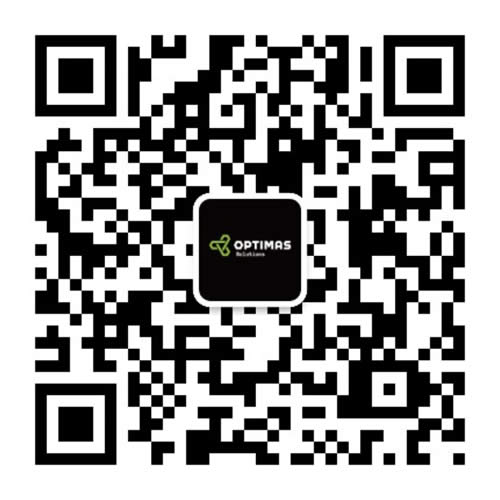
6 KPI para medir el valor de su programa VMI
A great VMI program, one that delivers significant cost and time savings, is likely one that has been measured and optimized over time. The six KPIs we’ll explore in this post will help you track and use critical data to make continuous improvements to your program.
Antes de sumergirnos en los KPI, echemos un vistazo a los diferentes tipos de programas VMI y cómo funcionan.
Modelos del programa VMI
VMI programs come in Push or Pull models and should be customized to your enterprise’s needs. Some determining factors for choosing an inventory management model are the size of your company, the number of parts you’re managing, proximity to your suppliers, and your current level of sophistication when it comes to inventory management.
Estrategias de atracción
Las estrategias de extracción son automáticas, proactivas y son una forma de 'gestión remota de piezas'.
Modelo RFID
La tecnología RFID avanzada se utiliza para automatizar la reposición de existencias. Cada contenedor tiene una tarjeta única con un chip RFID integrado. Cuando el contenedor está bajo/vacío, la tarjeta se retira y se coloca dentro de un lector de cajas RFID que activará de forma inalámbrica una orden de reposición.
Modelo de peso de escala RFID
Una báscula con lector RFID y registrador de datos incorporado en el sistema monitorea el stock. Cuando el peso cae por debajo de los niveles especificados, se produce automáticamente un pedido y el proveedor de VMI envía el stock.
Tanto los modelos RFID como Scale Weight requieren una inversión inicial para el almacenamiento. Estos modelos a menudo atraen a las pequeñas y medianas empresas.
Estrategias de empuje
Las estrategias de empuje son reactivas y requieren visitas in situ de sus proveedores de VMI.
Modelo de escaneo de contenedores
El proveedor de VMI es responsable de mantener los niveles de inventario. Cada contenedor tiene una etiqueta de código de barras que el operador del proveedor de VMI escanea utilizando un escáner de mano. Esto inicia el ciclo de escaneo, retira el contenedor, rellena y escanea nuevamente en su lugar en la ubicación del lado de la línea del cliente. En algunos programas, el cliente realizará el escaneo por sí mismo y pedirá al proveedor que reabastezca.

Los modelos de escaneo de contenedores pueden seguir cualquiera de estas dos opciones de almacenamiento:
Muelle a Muelle
Las existencias del proveedor desde su muelle hasta el muelle del cliente (muelle siendo almacén a almacén), generalmente por orden directa del cliente, programa o plan de previsión.
Dock-to-Stock
Esta opción tiene el mismo aspecto que muelle a muelle excepto que el proveedor hace el reabastecimiento en el supermercado en el lugar del cliente.
Modelo de envío
Este es el modelo menos común, pero algunos fabricantes pequeños y medianos lo prefieren porque es de pago por uso.tú-Vamos. Tiene más sentido cuando el proveedor y el cliente están geográficamente cerca el uno del otro y el principal impulsor del cliente es gestionar el flujo de caja.
Una vez que haya implementado el modelo de gestión de inventario adecuado, querrá medir la actividad de su programa con estos seis indicadores clave de desempeño:
1 tasa de llenado
La tasa a la que se cumple el pedido en respuesta a la demanda. No es un KPI estático, sino un número que querrá monitorear para optimizar mejor su inventario y evaluar a sus proveedores.
2 Uso real
El uso decreciente o creciente de una pieza específica, probablemente provocado por un cambio de ingeniería en el producto. Conocer el uso real puede ayudarlo a tomar decisiones sobre qué piezas desechar para liberar espacio y qué piezas tienen demanda.
3 Inventario disponible
Esto indica cuántas de las piezas tiene actualmente a mano. Tener una imagen clara de su inventario disponible lo ayudará a evitar la reposición y el reabastecimiento innecesarios, lo que puede interrumpir la línea e incurrir en costos innecesarios.
4 Entrega a tiempo
Esta es la frecuencia con la que las piezas se entregan en el lugar adecuado en el momento adecuado. Esto puede incluir opciones personalizadas, como entregas de pedidos completos o parciales.
5 Cumplimiento de etiquetado/embalaje
El etiquetado y el empaque claros le permiten saber "qué hay en el contenedor" para que pueda procesar rápidamente, Tienda y encontrar artículos en almacenes y plantas. Un socio de VMI puede ayudarlo brindándole etiquetas personalizadas para bolsas, cajas y estantes según sus especificaciones.
6 Informes y reuniones de proveedores
A good VMI program is supported by regular meetings and reporting that help identify areas for improvement. Quality VMI partners will provide quarterly business reviews where data is shared about parts utilization and fulfillment.
Su socio VMI puede ayudar
Un programa VMI se puede mejorar continuamente revisando los datos del programa, incluidos los seis KPI mencionados anteriormente. Deberá trabajar con un socio de VMI que pueda ayudarlo a identificar qué KPI son más importantes para medir su programa específico.
Once you’ve identified areas for improvement, your VMI partner can suggest solutions and technologies for optimization. For example, if you’re experiencing inconsistencies with notifications on an RFID program – you may want your partner to check-in to see if the technology is working properly or if bin labels need replacing. Or, if there’s a sudden surge in demand for a part, a Just-In-Time (JIT) system can automatizar ordenando Las personalizaciones del programa son infinitas: solo es cuestión de trabajar con su socio para tomar decisiones basadas en datos que brinden los resultados que necesita.






